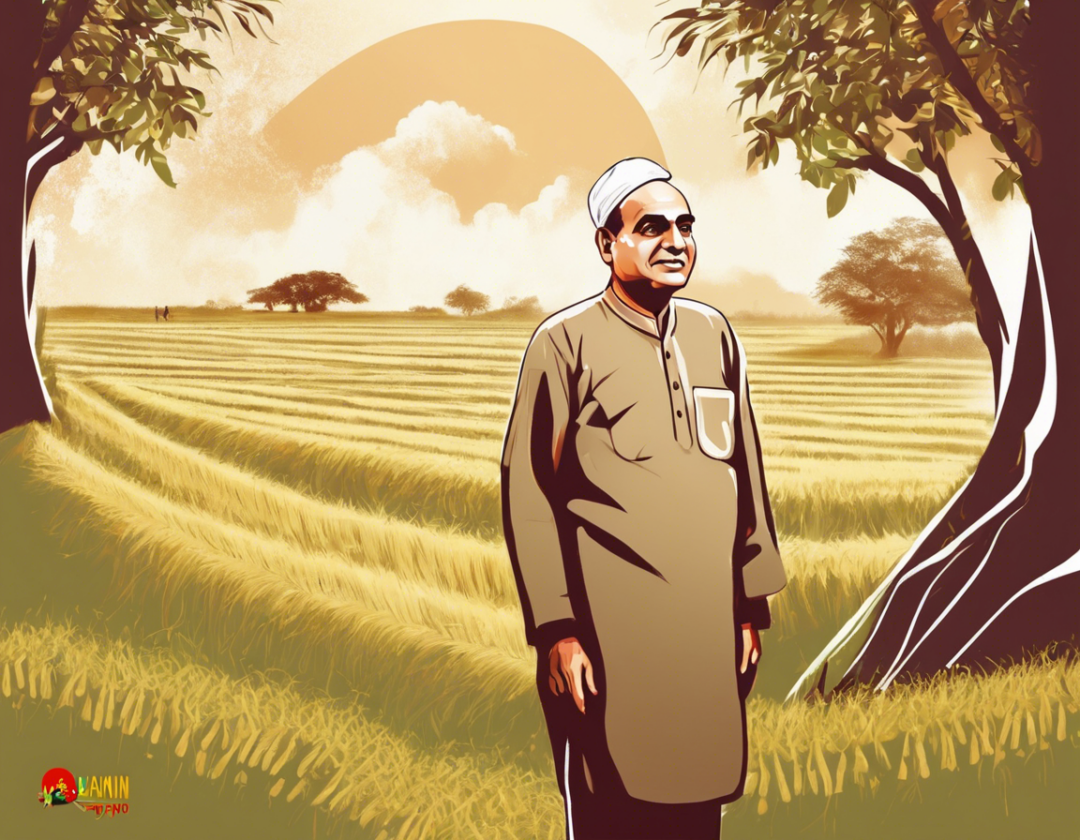Rajiv Gandhi Kisan Nyay Yojana: Transforming Agriculture in India

In a bid to revitalize the agricultural sector in India, the Chhattisgarh government introduced the Rajiv Gandhi Kisan Nyay Yojana in May 2020. This ambitious scheme is aimed at empowering farmers, enhancing agricultural productivity, and ensuring better returns on their produce. The scheme is named after the former Prime Minister of India, Rajiv Gandhi, and is focused on providing financial assistance to farmers to improve their livelihoods and overall well-being.
Background and Objectives of the Rajiv Gandhi Kisan Nyay Yojana
Background:
The agricultural sector is the backbone of India’s economy, employing a significant portion of the country’s workforce. However, farmers often face numerous challenges such as low crop prices, lack of access to credit, and inadequate infrastructure. These challenges have led to distress in the agricultural community, with many farmers struggling to make ends meet.
Objectives:
The Rajiv Gandhi Kisan Nyay Yojana was launched with the following key objectives:
- Income Support: To provide financial assistance to farmers to augment their income and improve their standard of living.
- Price Support: To ensure that farmers receive remunerative prices for their produce, thereby incentivizing agricultural activities.
- Boost Agricultural Productivity: To promote the adoption of modern agricultural practices and technologies to enhance productivity and efficiency.
- Empower Farmers: To empower farmers by providing them with the necessary resources and support to increase their income opportunities.
Salient Features of the Rajiv Gandhi Kisan Nyay Yojana
Financial Assistance:
Under the Rajiv Gandhi Kisan Nyay Yojana, farmers are provided with direct cash transfers for paddy and maize crops. The government guarantees a minimum support price (MSP) to farmers for these crops, ensuring that they receive a fair price for their produce.
Crop Coverage:
Initially, the scheme covered paddy and maize crops, which are predominant in Chhattisgarh. However, the government has plans to expand the scheme to include other crops in the future, thereby benefiting a larger section of farmers.
Transparent Mechanism:
The scheme operates through a transparent mechanism wherein the government directly transfers the financial assistance to the bank accounts of eligible farmers. This eliminates intermediaries and ensures that the benefits reach the intended beneficiaries.
Timely Payments:
One of the key highlights of the Rajiv Gandhi Kisan Nyay Yojana is the timely disbursal of payments to farmers. This provides farmers with much-needed liquidity to invest in their agricultural activities and meet other household expenses.
Monitoring and Evaluation:
The government conducts regular monitoring and evaluation of the scheme to track its progress and assess its impact on farmers’ livelihoods. This ensures accountability and helps in identifying areas for improvement.
Benefits of the Rajiv Gandhi Kisan Nyay Yojana
Improved Income:
By providing financial assistance and ensuring MSP for crops, the scheme helps farmers improve their income and economic well-being. This, in turn, reduces farmer distress and enhances their overall quality of life.
Price Stability:
The scheme provides price stability to farmers by guaranteeing MSP for paddy and maize crops. This shields farmers from market fluctuations and ensures that they receive a fair price for their produce.
Agricultural Development:
Through the adoption of modern agricultural practices and technologies, the scheme aims to boost agricultural productivity and efficiency. This not only benefits farmers but also contributes to the growth of the agricultural sector.
Empowerment of Farmers:
By empowering farmers with financial assistance and support, the scheme enhances their agency and decision-making capabilities. This empowers farmers to make informed choices about their agricultural activities and investments.
Challenges and the Way Forward
While the Rajiv Gandhi Kisan Nyay Yojana has been lauded for its efforts to uplift farmers, there are certain challenges that need to be addressed for its successful implementation. These include ensuring comprehensive coverage of all crops, promoting sustainable agricultural practices, enhancing market linkages, and addressing issues of land tenure and water management.
To overcome these challenges, the government should focus on expanding the scope of the scheme to include a wider range of crops, promoting climate-resilient agriculture, strengthening agricultural infrastructure, and fostering public-private partnerships in the agricultural sector. Additionally, capacity building initiatives, access to credit, and extension services should be strengthened to enable farmers to leverage the benefits of the scheme effectively.
The Rajiv Gandhi Kisan Nyay Yojana has the potential to transform agriculture in Chhattisgarh and serve as a model for agricultural reforms in India. By prioritizing the welfare of farmers, promoting sustainable practices, and enhancing market access, the scheme can pave the way for a more prosperous and resilient agricultural sector in the country.
FAQs (Frequently Asked Questions)
Q1: Who is eligible to benefit from the Rajiv Gandhi Kisan Nyay Yojana?
A1: All farmers cultivating paddy and maize in Chhattisgarh are eligible to receive financial assistance under the scheme.
Q2: How are the cash transfers made to farmers under the scheme?
A2: The government directly transfers the financial assistance to the bank accounts of eligible farmers to ensure transparency and efficiency.
Q3: Are there plans to include other crops under the scheme in the future?
A3: Yes, the government plans to expand the scheme to include other crops to benefit a larger section of farmers.
Q4: How does the scheme ensure price stability for farmers?
A4: The scheme guarantees a minimum support price (MSP) for paddy and maize crops, providing price stability to farmers.
Q5: What measures are in place to monitor the progress of the scheme?
A5: The government conducts regular monitoring and evaluation to track the progress and impact of the scheme on farmers’ livelihoods.
Q6: How does the Rajiv Gandhi Kisan Nyay Yojana empower farmers?
A6: By providing financial assistance and support, the scheme empowers farmers to make informed decisions about their agricultural activities and investments.
Q7: What are the key objectives of the Rajiv Gandhi Kisan Nyay Yojana?
A7: The key objectives of the scheme include income support, price stability, boosting agricultural productivity, and empowering farmers.
Q8: How does the scheme contribute to agricultural development in Chhattisgarh?
A8: The scheme contributes to agricultural development by promoting modern agricultural practices, ensuring MSP for crops, and enhancing farmers’ income opportunities.
Q9: What are the challenges facing the successful implementation of the Rajiv Gandhi Kisan Nyay Yojana?
A9: Challenges include ensuring comprehensive crop coverage, promoting sustainable practices, enhancing market linkages, and addressing land tenure issues.
Q10: What is the significance of the Rajiv Gandhi Kisan Nyay Yojana for the agricultural sector in India?
A10: The scheme has the potential to transform agriculture by prioritizing farmer welfare, promoting sustainable practices, and enhancing market access, thereby paving the way for a prosperous agricultural sector in the country.
In conclusion, the Rajiv Gandhi Kisan Nyay Yojana holds great promise for transforming agriculture in Chhattisgarh and serves as a beacon of hope for farmers across the country. By addressing the challenges, leveraging opportunities, and staying committed to the welfare of farmers, the scheme can contribute significantly to the growth and development of the agricultural sector in India.








